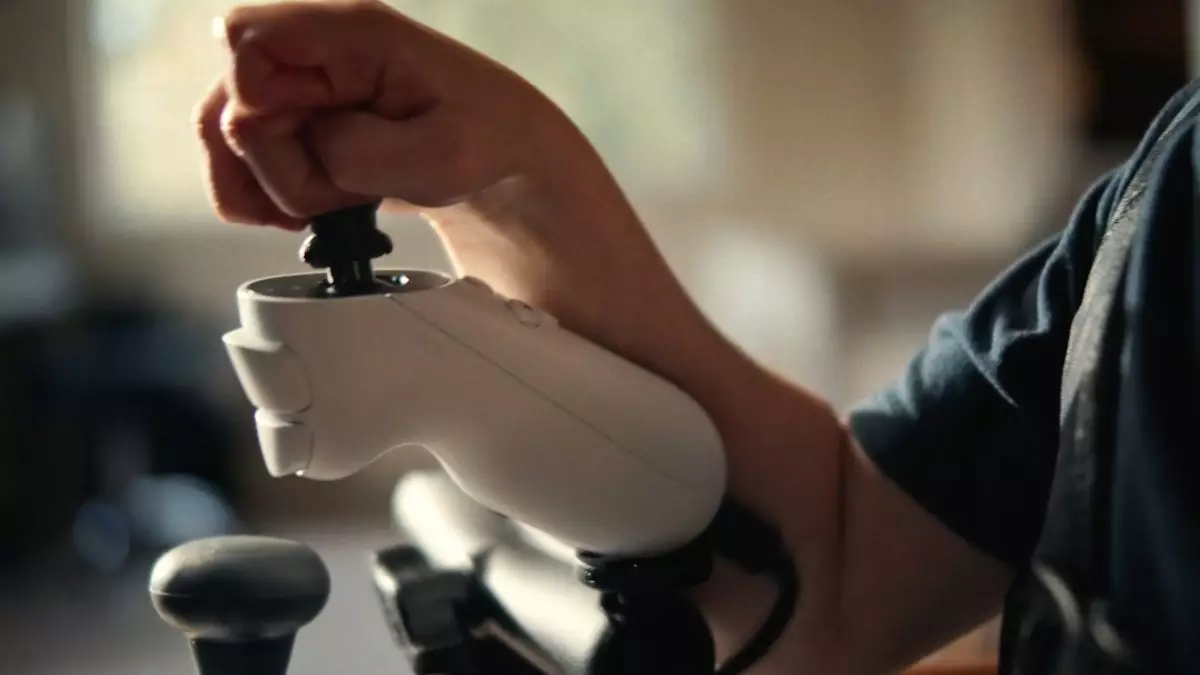Gaming has long been viewed as a world of exclusivity, frequently leaving behind those who cannot invest in expensive consoles or the latest AAA titles. For individuals with limited mobility, the challenge extends far beyond just financial constraints; the physical interaction with standard controllers often creates a barrier that makes gaming an impossible feat. Microsoft has sought to remedy this gap with its innovative Xbox Adaptive Joystick, unveiled at the 15th annual Microsoft Ability Summit, which showcases their commitment to inclusive gaming. This joystick is not only about hardware; it represents a fundamental shift in how the gaming industry can embrace diversity in its player base.
The Anatomy of Inclusivity
The newly introduced Xbox Adaptive Joystick is much more than another controller; it is an embodiment of inclusivity. Designed with players with limited mobility in mind, it features a simplified, baton-shaped design that allows for ease of use and versatility. Weighing only 106g, the joystick is remarkably lightweight and easy to handle. This design choice mirrors Microsoft’s approach to accessibility: breaking down complex gaming interactions into manageable components. The joystick is not just a gimmick; it’s functional and adaptive, aligning with its core mission to make gaming accessible for a wider audience.
What makes the joystick particularly noteworthy is its adaptability. Capable of being integrated into a variety of setups—be it a console or PC—its design allows for a custom fit for virtually any gamer. The ability to customize the joystick topper for comfort is an exciting step forward, although it raises questions about the practicality of 3D printing such parts. Still, the opportunity for personalization means that each user can tailor their experience, making the controller truly theirs.
The Role of Remapping in User Experience
An important feature of the Xbox Adaptive Joystick is its remappable buttons. Four buttons on the front and two bumpers on the back can be reassigned to suit individual preferences, allowing flexibility that many standard gamepads lack. This means that gamers can configure the button layout in an intuitive way that complements their unique needs. However, all these settings are implemented through the Xbox Accessories app, which raises some concerns regarding long-term viability and support. What happens if the app is no longer updated or loses compatibility?
While having smartphone-supported technology can streamline user experience, it places the future usability of the adaptive joystick in jeopardy. It’s a double-edged sword; yes, it simplifies the initial setup, but it also necessitates a dependency on software that may not be steadfast over time. This is an area where more thought needs to be applied, as the risk of rendering sophisticated hardware obsolete due to lack of software support defeats the purpose of making gaming accessible.
Microsoft’s Commitment to Accessibility
The sentiment behind Microsoft’s innovations in adaptive technology signifies a long-term commitment toward inclusivity. Their blog post regarding the Ability Summit 2025 reflects this dedication, offering a vision of a gaming landscape that welcomes everyone. Nevertheless, it’s vital to remain critical of how these commitments evolve. The history of the Adaptive Controller, which faced challenges even before its birth due to funding cuts, casts a shadow over these promises.
However, it is noteworthy that the Xbox Adaptive Joystick builds on the existing framework of accessibility tools, indicating a maturation of Microsoft’s approach. The willingness to make adaptive technologies both affordable and usable across the Xbox ecosystem is a sign that they are listening to diverse voices. There is optimism in recognizing that innovation is not merely about profit but about extending pathways for enjoyment to those who have been marginalized by traditional gaming standards.
A Call to Continuous Improvement
While it is heartening to witness companies like Microsoft take steps toward creating a more inclusive gaming environment, there is so much more to accomplish. As technology progresses, the industry should not rest on its laurels but instead continuously seek to improve. The Xbox Adaptive Joystick stands as a beacon of hope, suggesting a future where everyone, regardless of their physical capabilities, can enjoy the immersive worlds that gaming offers.
By remaining vigilant and pushing for thoughtful integration of adaptive technologies, gamers everywhere can look forward to a time when inclusivity is not an afterthought, but rather an inherent aspect of the gaming experience. In this ongoing dialogue between developers and gamers, the ultimate goal should be a universal approach that champions accessibility for all.

